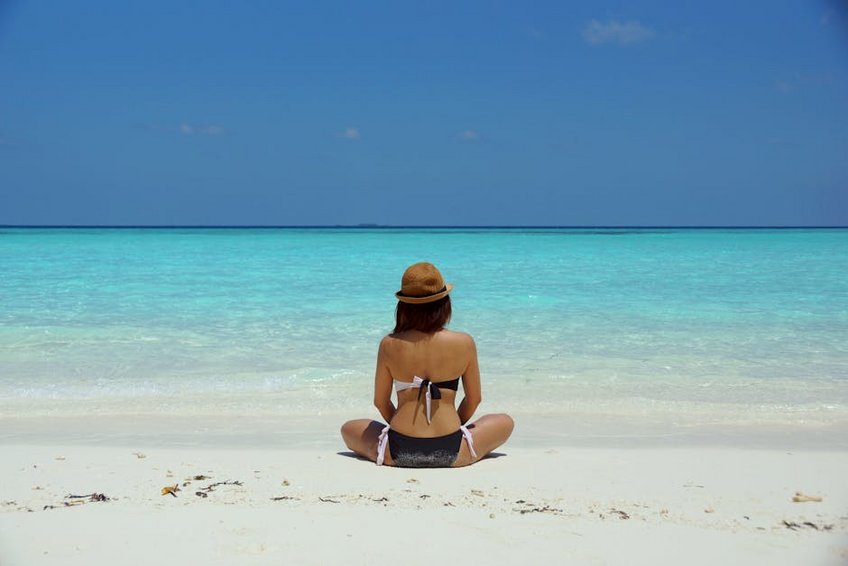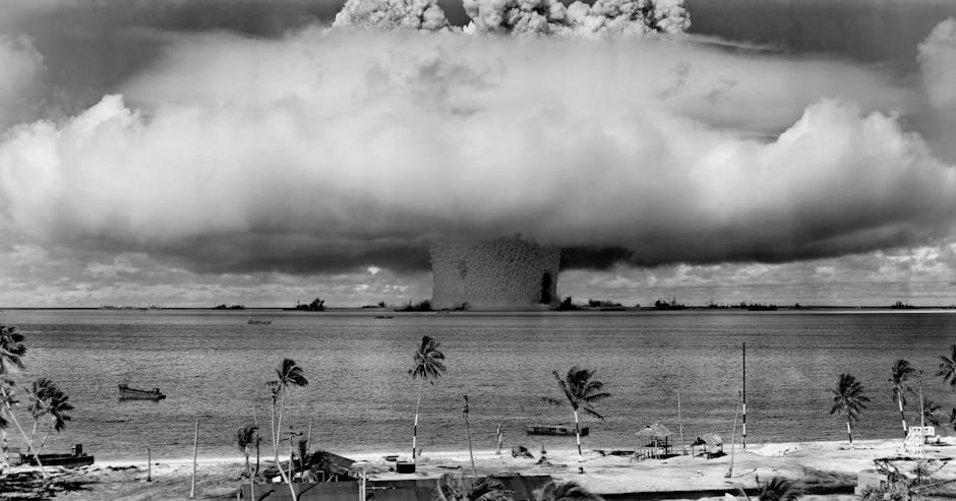Marshall Islands Bikini Atoll History: Uncovering Nuclear Legacy
Bikini Atoll’s history represents a profound chapter in Pacific nuclear testing with lasting global implications. The Marshall Islands location witnessed 23 atomic tests between 1946 and 1958, displacing indigenous communities and altering marine ecosystems permanently. This guide explores the atoll’s complex past, current accessibility, and responsible tourism approaches for history enthusiasts.
Essential Historical Background
Bikini Atoll forms part of the Marshall Islands archipelago in Micronesia’s central Pacific region. United States military forces selected this remote location for Operation Crossroads nuclear testing in 1946. The subsequent weapon trials fundamentally transformed the atoll’s geography and habitability.
Local Bikinian residents relocated to Rongerik Atoll before testing commenced in 1946. Their temporary exile became permanent as radiation levels prevented safe repatriation for decades. The community’s displacement represents one of nuclear history’s most significant human rights cases.
Nuclear Testing Timeline
Understanding the testing chronology helps contextualize the atoll’s radiation status.
- Operation Crossroads (1946) conducted two atomic detonations – Able and Baker – sinking numerous target vessels including the USS Saratoga.
- Castle Bravo (1954) detonated as the most powerful US nuclear test, contaminating nearby atolls and Japanese fishing vessels.
- The testing series concluded in 1958 after generating equivalent explosive power to 7,000 Hiroshima bombs collectively.
- Budget-conscious travelers should consider Marshall Islands cultural tours focusing on nuclear history museums in Majuro starting at $2,000 for week-long programs.
- Mid-range options include liveaboard diving trips to peripheral atolls with historical briefings priced between $5,000-$8,000 including equipment and permits.
- Premium Bikini Atoll expeditions with radiation monitoring and scientific guides cost $12,000+ for 10-14 day programs including charter flights from Honolulu.
- Republic of the Marshall Islands Embassy
- UNESCO World Heritage Centre
Geographical and Environmental Impact
Nuclear explosions created crater lakes and altered the atoll’s physical structure dramatically. Bravo Crater measures approximately 2km wide and 80m deep today. Marine ecosystems experienced massive initial destruction but have shown remarkable recovery in recent decades.
Radiation levels have decreased significantly but remain elevated in specific areas. Cesium-137 concentrations in lagoon sediments require continued monitoring. The ecosystem now hosts thriving coral communities and diverse fish populations despite historical contamination.
Cultural Significance and Legacy
Bikinian people maintain strong cultural connections to their ancestral homeland despite permanent displacement. Traditional navigation knowledge and fishing practices represent intangible cultural heritage. Current generations continue advocating for environmental remediation and compensation.
UNESCO designated Bikini Atoll as a World Heritage site in 2010 recognizing its nuclear history significance. The listing acknowledges both the technological achievement and profound human cost. Preservation efforts focus on maintaining test artifacts as historical documents.

Alt: “bikini-atoll-nuclear-test-crater-aerial-view”
Marshall Islands Bikini Atoll History – Planning Your Trip
Visiting Bikini Atoll requires extensive preparation and special permits due to its unique status. The Marshall Islands government restricts access to approved tour operators with radiation safety protocols. Your historical exploration demands careful logistical planning and budget allocation.
Standard tourist infrastructure remains extremely limited around the exclusion zone. Most visitors join specialized diving expeditions focusing on the submerged nuclear test fleet. These trips typically originate from Majuro or Kwajalein with military coordination.
Best Time to Visit Bikini Atoll
December through April offers optimal diving conditions with visibility exceeding 30 meters. Pacific dry season brings calmer seas and minimal rainfall during these months. Water temperatures range from 80-84°F (27-29°C) providing comfortable exploration conditions.
May through November experiences higher rainfall and potential tropical disturbances. Fewer expeditions operate during this period though advanced booking remains essential year-round. The historical significance remains constant regardless of seasonal variations.
Budget Planning and Costs
Bikini Atoll visits represent premium historical tourism experiences with significant costs.
Essential Preparation Checklist
Secure Marshall Islands tourist visa and Bikini Atoll special access permits 90 days minimum before travel. US passport holders receive 90-day visa-free entry but still need specific atoll permissions. Comprehensive medical insurance must cover emergency evacuation from remote locations.
Pack radiation monitoring badges, conservative clothing respecting local customs, and reef-safe sunscreen. Physical fitness requirements apply for diving activities given remote locations and limited medical facilities. Document all permits electronically and physically throughout your journey.
Historical Sites and Interpretation
Bikini Atoll’s tangible history appears through submerged artifacts and land-based memorials. The underwater ghost fleet includes iconic vessels like the USS Saratoga aircraft carrier. These wrecks create artificial reefs teeming with marine life despite their origins.
Land-based monuments commemorate displaced Bikinian communities and nuclear test workers. Concrete markers indicate ground zero locations though radiation levels prevent prolonged exposure. Visitor numbers remain strictly limited to preserve site integrity.
Must-See Historical Locations
Bravo Crater remains the most visually striking nuclear test artifact visible from aircraft. The thermonuclear explosion displaced 90 million tons of material instantly. Modern radiation levels permit brief overflights but not landings.
USS Saratoga wreck lies upright in 52 meters of water with aircraft elevators visible. Divers can explore hangar decks containing Hellcat aircraft despite depth challenges. Nagato battleship wreck represents another significant Japanese vessel used in testing.
Alternative Historical Experiences
Alele Museum in Majuro provides comprehensive nuclear history exhibits with artifacts. The collection includes traditional Marshallese navigation charts and nuclear testing photographs. Cultural demonstrations highlight weaving techniques and canoe building traditions.
Ebeye Island offers perspectives on displaced community experiences though tourism infrastructure remains basic. Local guides share oral histories about relocation impacts across generations. These visits require cultural sensitivity and advance arrangements.
Research and Educational Opportunities
Several universities conduct archaeological documentation of test site artifacts. Columbia University’s Nuclear Futures Initiative provides scientific context for visitors. Independent researchers can access archival materials through Marshall Islands national archives.
Digital resources include comprehensive testing databases and oral history collections. The Atomic Heritage Foundation maintains extensive online resources for pre-trip education. Virtual reality experiences now simulate historical detonations without radiation exposure.
Practical Travel Information
Marshall Islands tourism infrastructure focuses primarily on Majuro and Kwajalein atolls. International flights connect through Honolulu, Guam, or Fiji with United Airlines providing regular service. Domestic transport between atolls uses small aircraft or charter boats.
Accommodation ranges from basic guesthouses to international standard hotels in urban centers. Bikini Atoll itself offers no tourist facilities beyond expedition support vessels. All visitors must join organized tours with approved operators.
| Accommodation Type | Location and Features | Price Range (USD) |
|---|---|---|
| Budget Guesthouse | Majuro central location with shared facilities and basic amenities | $80-120/night |
| Mid-Range Hotel | Waterfront location with air conditioning and restaurant access | $150-250/night |
| Liveaboard Vessel | Full-board expedition cruise with diving equipment and guides | $400-700/night |
| Resort Hotel | Kwajalein private island with premium services and transfers | $300-500/night |


